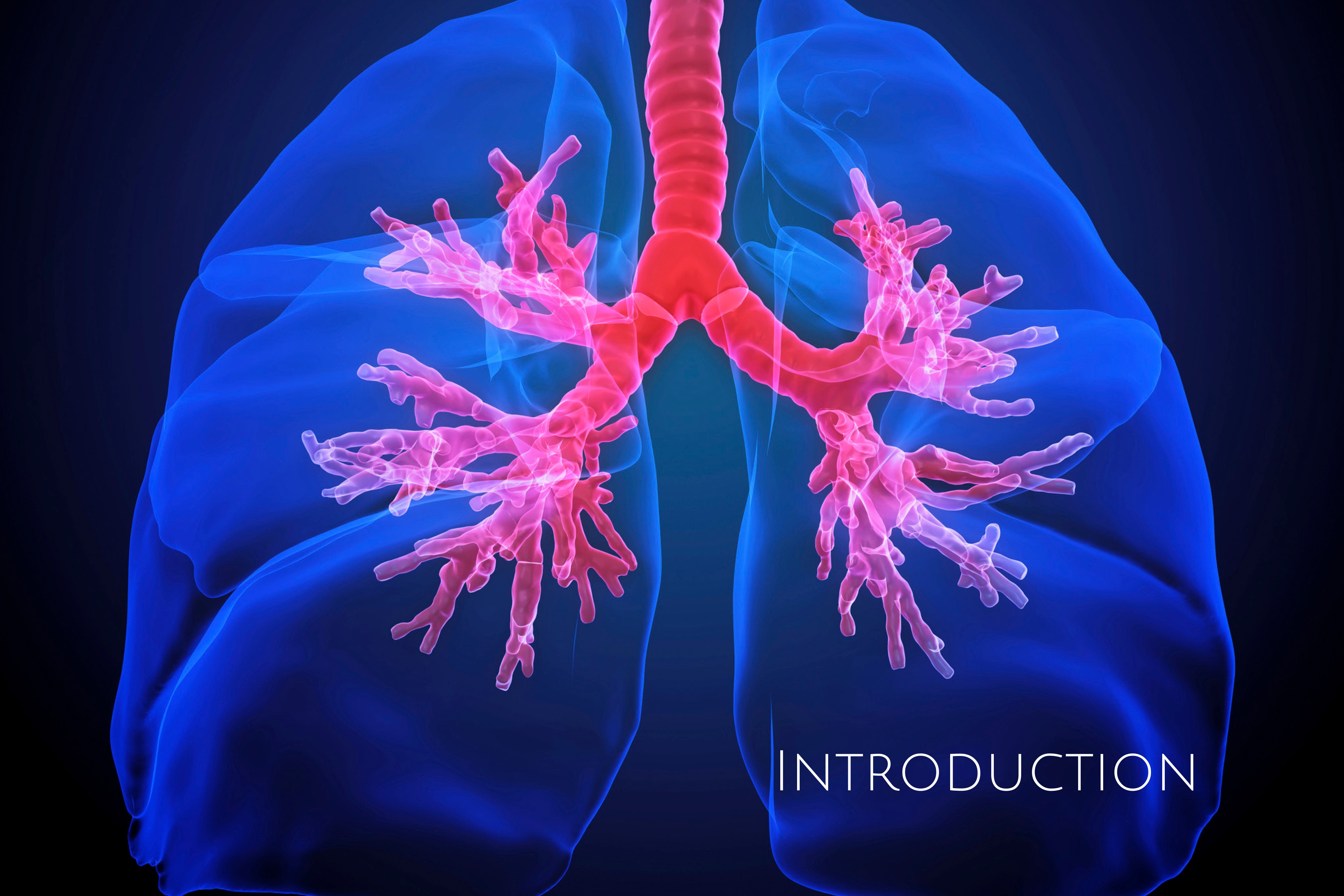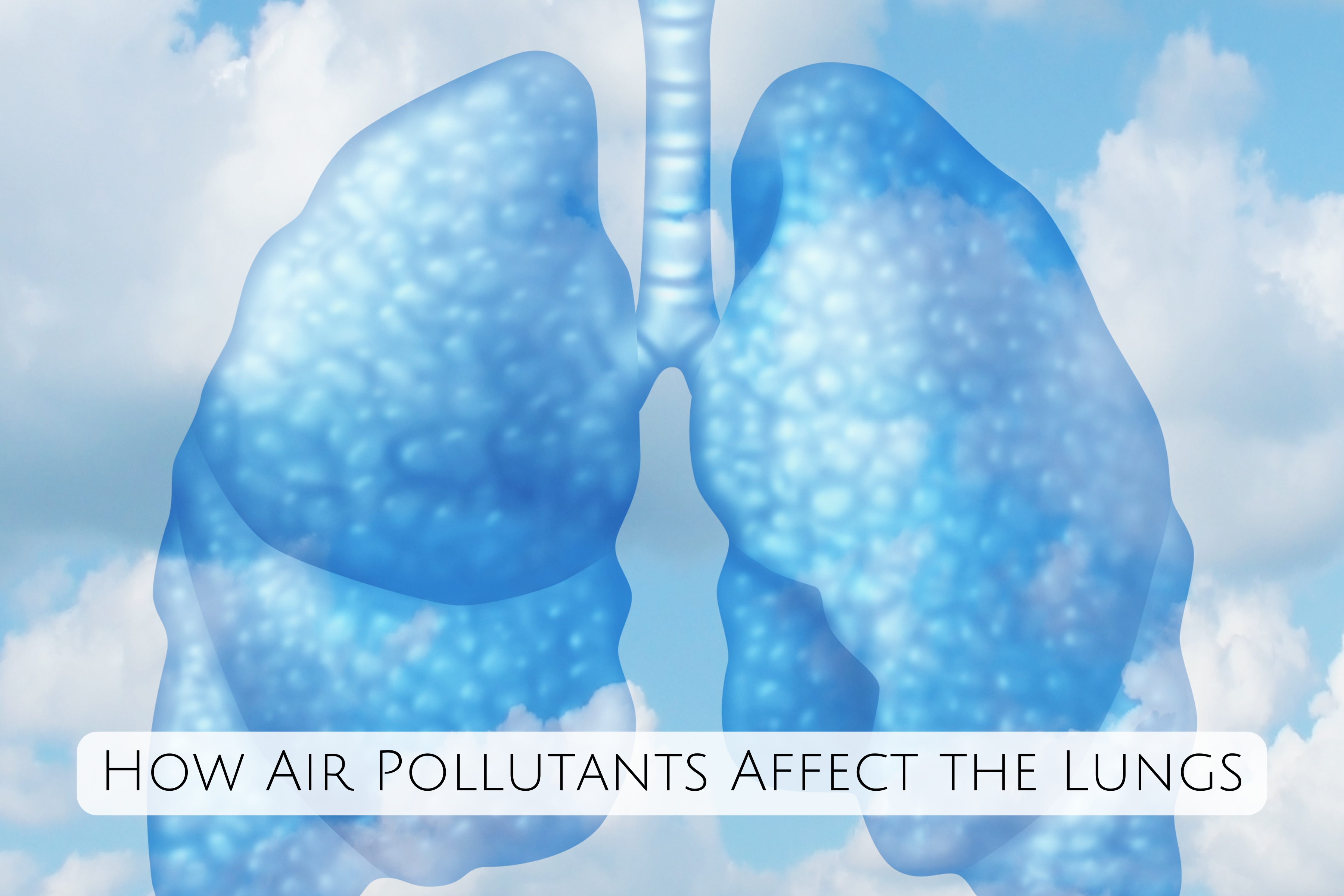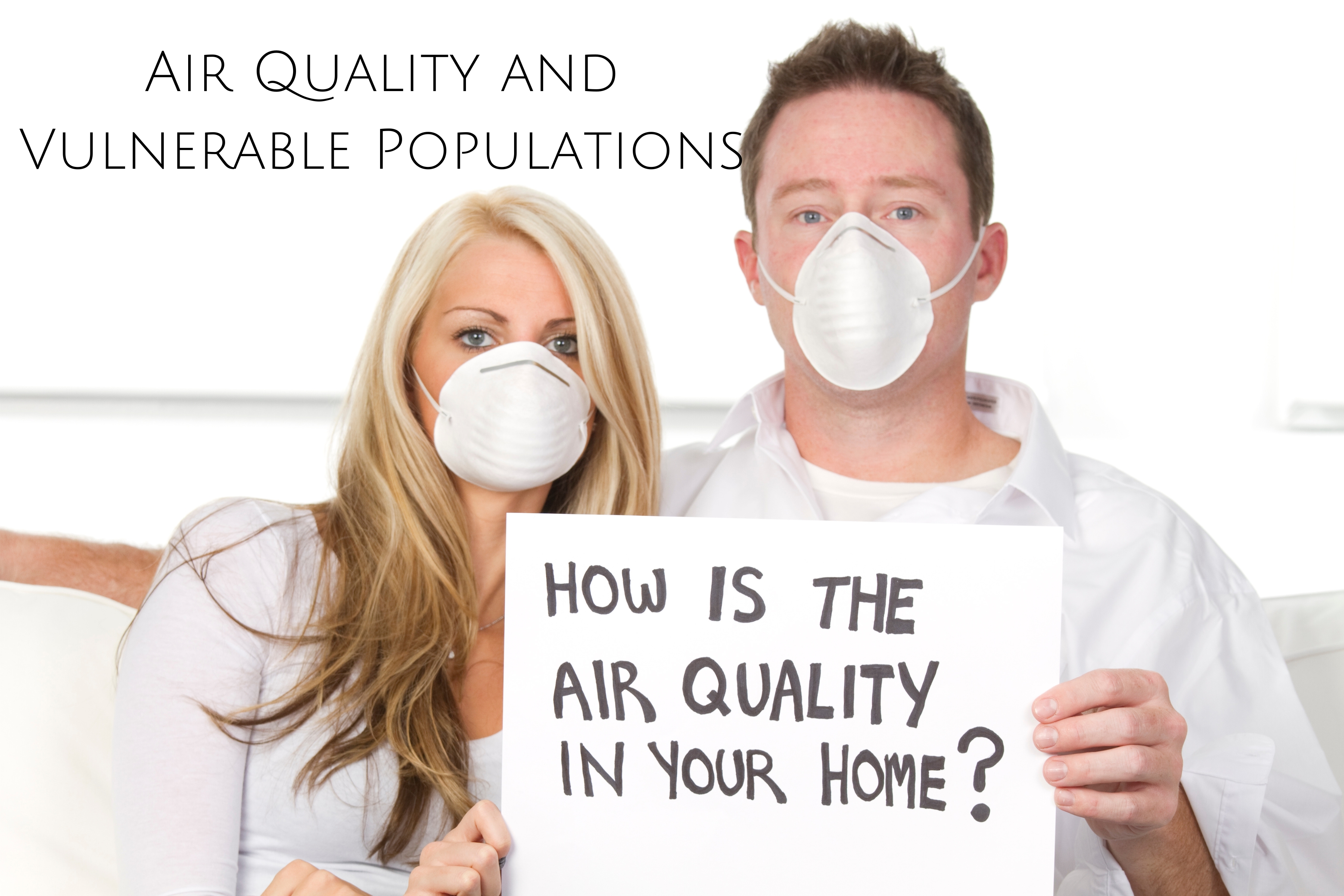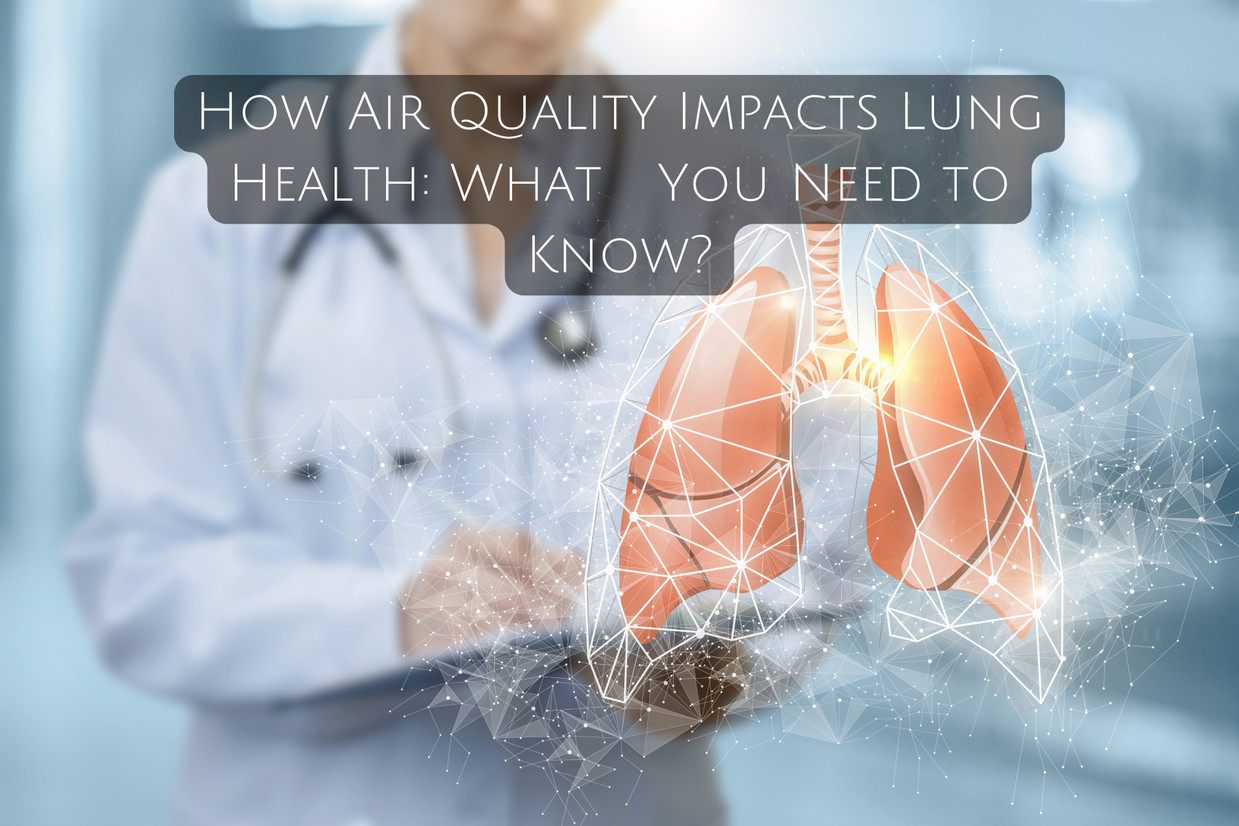How Air Quality Impacts Lung Health: What You Need to Know?
Introduction:

Air quality is crucial in maintaining overall health, yet it's often underestimated in daily wellness discussions. The air we breathe directly impacts our respiratory health, especially as pollution levels continue to rise globally. Poor air quality can lead to various respiratory problems and significantly increase the risk of chronic lung diseases. With the ever-growing presence of pollutants in the environment due to factors like industrialization, urbanization, and increased vehicle emissions, understanding the link between air quality and lung health is essential.
This article delves into the effects of air pollution on our lungs, identifying vulnerable populations, exploring common respiratory illnesses tied to poor air quality, and offering practical ways to protect lung health in a world with increasing pollution.
Understanding Air Quality:

Air quality refers to the condition of the air we breathe and is measured by the concentration of pollutants within it. These pollutants can include both natural and man-made elements. Common air pollutants that negatively impact lung health are particulate matter (PM), nitrogen dioxide (NO2), sulfur dioxide (SO2), carbon monoxide (CO), ozone (O3), and volatile organic compounds (VOCs).
- Particulate Matter (PM2.5 and PM10): These tiny particles can penetrate deep into the respiratory system. PM2.5 (particles smaller than 2.5 micrometers) is particularly harmful, as it can enter the lungs and bloodstream, leading to inflammation and potentially causing cardiovascular problems.
- Nitrogen Dioxide (NO2): Emitted from vehicles and industrial facilities, NO2 is a potent irritant that exacerbates asthma and other respiratory diseases.
- Ozone (O3): Ground-level ozone, commonly associated with smog, can cause chest pain, coughing, and worsen chronic respiratory conditions like asthma.
Air pollution sources include both natural (wildfires, volcanic eruptions) and anthropogenic (vehicles, factories, and agriculture) activities. Increased awareness and understanding of these pollutants are vital for minimizing exposure and safeguarding lung health.
How Air Pollutants Affect the Lungs:

Air pollutants can harm lung tissue in various ways, causing inflammation, oxidative stress, and immune responses that damage respiratory health over time.
- Mechanisms of Damage: Pollutants like PM2.5 can bypass the natural defenses of the respiratory system and penetrate deep into the lungs. There, they cause inflammation and oxidative stress, leading to cellular damage and reduced lung function.
- Short-Term Effects: Immediate reactions to pollutants can include wheezing, chest tightness, and increased respiratory infections, particularly in sensitive individuals.
- Long-Term Effects: Continuous exposure to polluted air may also contribute to cardiovascular problems, reduced lung function, and overall decreased life expectancy, emphasizing the need for clean air initiatives.
These mechanisms underscore the importance of protecting the lungs from exposure to harmful pollutants, especially for people with pre-existing respiratory conditions.
Air Quality and Vulnerable Populations:

Certain groups are more vulnerable to the adverse effects of air pollution, including children, the elderly, pregnant women, and individuals with respiratory issues.
- Children: Developing lungs make children particularly susceptible to air pollution. Their smaller airways and faster breathing rates increase the amount of pollution they inhale, which can lead to stunted lung growth and long-term respiratory issues.
- The Elderly: As people age, lung function naturally declines, making the elderly more prone to respiratory conditions. For older adults, pollution exposure can exacerbate pre-existing health issues, such as COPD or heart disease.
- Low-Income and Industrial Communities: Individuals living near highways or industrial areas are exposed to higher pollution levels, and their health often suffers as a result. Research has shown that these communities report higher rates of asthma, COPD, and other respiratory issues due to their continuous exposure to pollutants.
Understanding these vulnerabilities helps in designing targeted interventions and support for the populations most affected by poor air quality.
Major Health Impacts of Poor Air Quality on the Lungs:

- Asthma: Air pollutants like ozone, nitrogen dioxide, and particulate matter are known asthma triggers. Exposure to these pollutants can lead to more frequent asthma attacks and worsen symptoms, impacting quality of life.
- Chronic Obstructive Pulmonary Disease (COPD): Long-term exposure to pollutants contributes to COPD, a progressive condition that makes breathing increasingly difficult. People with COPD are highly sensitive to air pollution, which can worsen their symptoms and decrease lung function.
- Lung Cancer: Some air pollutants, such as benzene and formaldehyde, have been linked to a higher risk of lung cancer. Although smoking remains the primary cause, studies show that long-term exposure to environmental pollutants also increases cancer risk.
- Respiratory Infections: Pollutants weaken the immune defenses in the lungs, making individuals more vulnerable to infections like pneumonia and bronchitis. This issue is especially alarming for vulnerable populations, including infants, older adults, and individuals with weakened immune systems.
- Impaired Lung Development in Children: Exposure to high pollution levels during childhood can reduce lung development, which can lead to respiratory issues later in life. This developmental impact underlines the need to protect children from air pollution exposure as much as possible.
Indoor Air Quality and Lung Health:

Many people don't realize that indoor air pollution can sometimes be more harmful than outdoor air, especially in enclosed spaces with limited ventilation. Common indoor pollutants include tobacco smoke, cooking fumes, cleaning chemicals, mold, and radon.
- Tobacco Smoke: Secondhand smoke is highly toxic, especially for children, the elderly, and non-smoking adults.
- Cooking Fumes: Gas stoves and certain cooking oils release fine particles that can irritate the lungs.
- Cleaning Chemicals: Many household cleaning products contain VOCs, which can irritate the respiratory system when used frequently.
- Mold: Mold releases spores that, when inhaled, can cause allergic reactions and worsen asthma symptoms.
Improving indoor air quality can involve increasing ventilation, using air purifiers, and avoiding harsh cleaning products. By maintaining a clean indoor environment, individuals can reduce their overall exposure to harmful pollutants and protect their respiratory health.
How to Monitor and Improve Air Quality for Lung Health:

- Monitoring Air Quality: Tools like the Air Quality Index (AQI) and mobile apps allow individuals to track local pollution levels. The AQI provides a color-coded score indicating the severity of pollution in real-time, which helps people plan their outdoor activities accordingly.
- Preventive Measures:
- Reduce outdoor activities on high-pollution days.
- Use protective masks, especially in areas with high smog or wildfire smoke.
- Consider investing in HEPA air filters and air purifiers to remove pollutants from indoor spaces.
- Lifestyle Changes:
- Avoid smoking, as it not only impacts personal lung health but also contributes to indoor pollution.
- Stay active, but consider exercising indoors during high-pollution days.
- Eat a diet rich in antioxidants, which help protect against oxidative stress caused by pollution.
By taking these steps, individuals can proactively reduce their exposure to air pollution, safeguard their lung health, and reduce the overall risk of respiratory diseases.
Conclusion:

Awareness of air quality’s impact on lung health is vital for making informed choices. Pollution exposure affects not just vulnerable groups but everyone, and protecting lung health requires a multi-faceted approach. Simple lifestyle changes, monitoring air quality, and advocating for cleaner policies can all contribute to healthier air and better respiratory health.
Ultimately, while individual actions are important, meaningful change requires collective efforts. Cleaner air will improve lung health for everyone, emphasizing the need for proactive policies and community awareness to create a healthier environment for future generations.
Recent Posts
-
Water Memory: The Quantum Perspective on Why Water is More Than H₂O
Water is everywhere—covering over 70% of the Earth’s surface, coursing through our bodies, and essen
-
What Are Biofilms and Why Are They So Hard to Get Rid Of?
Biofilms are fascinating yet challenging structures that have significant implications for health, i
-
The Science Behind Boswellia Extract: How It Works in the Body
Boswellia serrata, also known as frankincense, is a resin obtained from the Boswellia tree that has





